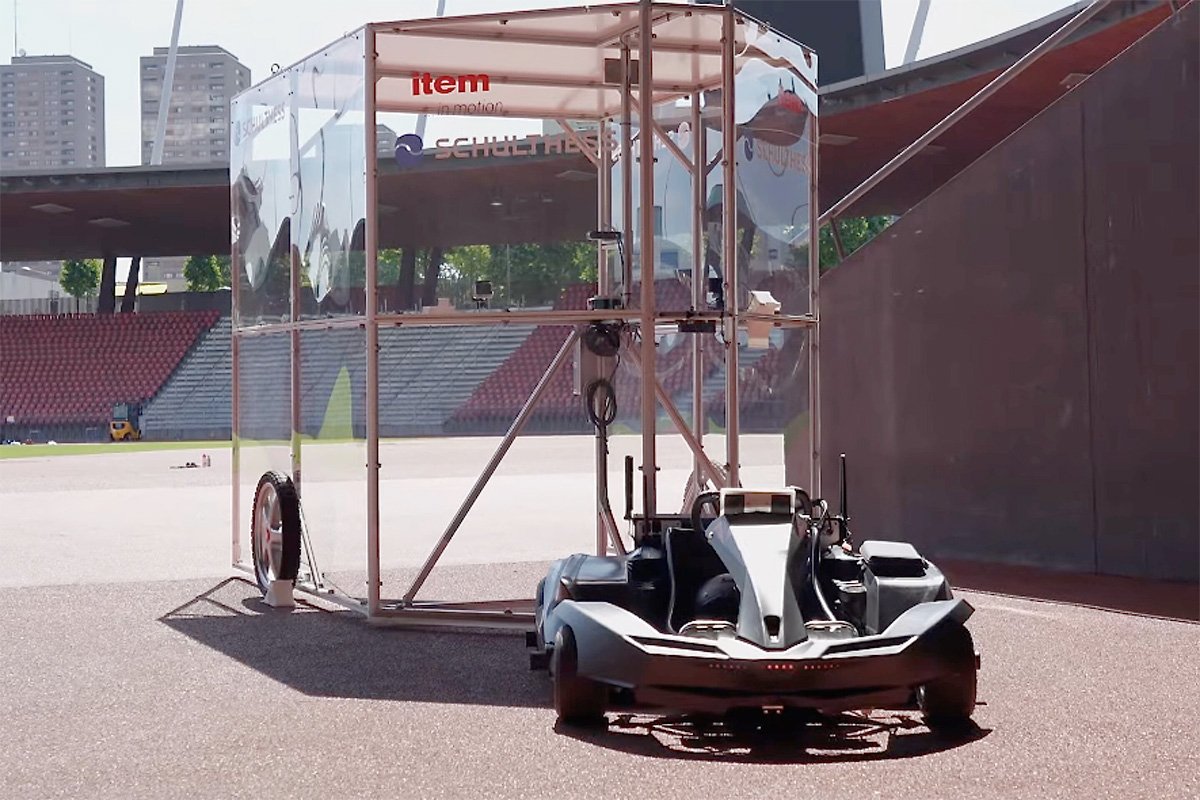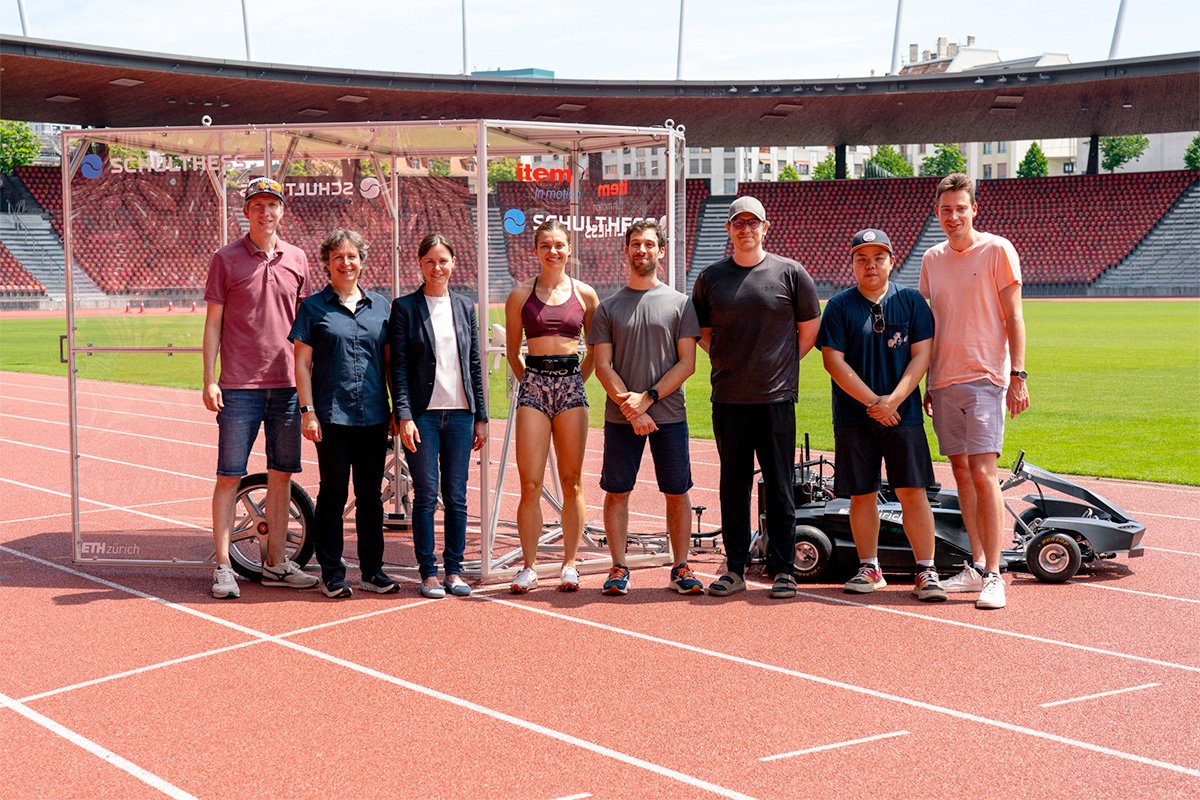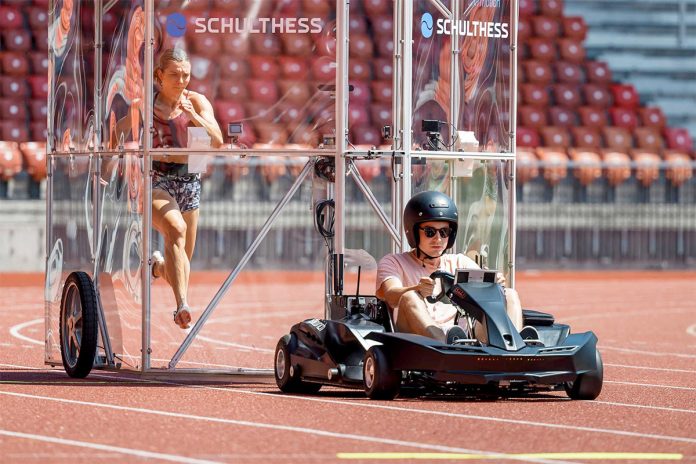Running faster is not only about physical endurance but also about learning the precise neuromuscular sequences required for higher speeds. The Airshield, a new prototype developed by Prof. Melanie Zeilinger, Dr. Andrea Carron, Prof. Christina Spengler, and their colleagues at ETH Zurich, aims to facilitate this learning process by allowing athletes to train without experiencing air resistance.
The concept behind the Airshield revolves around “overspeed training.” This technique involves using artificial means to enable an athlete to run faster than their current unaided capacity. The primary goal is to help the athlete’s body familiarize itself with the neuromuscular demands of running at higher speeds, thereby enabling them to replicate such performance levels independently in the future.
The Airshield is designed as a wedge-shaped, open-backed cart with transparent plastic sheets covering the front and sides. This cart is towed behind an electric go-kart driven along a running track. As the athlete runs behind the Airshield, a rear-facing LiDAR sensor inside the shield continuously monitors the distance between the runner and the shield. This data is wirelessly transmitted to the go-kart, which adjusts its speed to maintain the athlete in the optimal position behind the shield. The driver’s role is solely to steer the go-kart.
Moreover, the Airshield is equipped with multiple video cameras that record footage of the athlete. This footage can later be reviewed by both the athlete and their coach to analyze performance and identify areas for improvement.

The innovative design of the Airshield offers a controlled environment for athletes to experience and adapt to higher running speeds without the hindrance of air resistance. This not only helps in improving their speed but also provides valuable visual feedback for further refinement of their technique.
Currently, the Airshield remains in the prototype stage, with no announced timeline for its availability in regular training sessions. However, its development represents a significant step forward in the application of technology to sports training, potentially transforming how athletes achieve and maintain peak performance levels.

Source: ETH Zurich



